Staying warm in the winter or keeping cool in the summer can be challenging if your home isn’t insulated properly. Although it may seem simple, having residential insulation explained requires you to understand the properties of different materials.
Although all types of insulation reduce airflow to a certain degree, they’re not equally efficient at boosting your home’s thermal efficiency. Some types of residential insulation are made from petrochemicals, and they contain a high concentration of chemical components.
Consequently, working with these materials and having them installed in the walls, doorframes, or the roof of your house can have a negative long-term effect on your health. So, in this article, we’ll explain all aspects of residential insulation and help you find the most suitable solution for your home.
What is residential insulation?
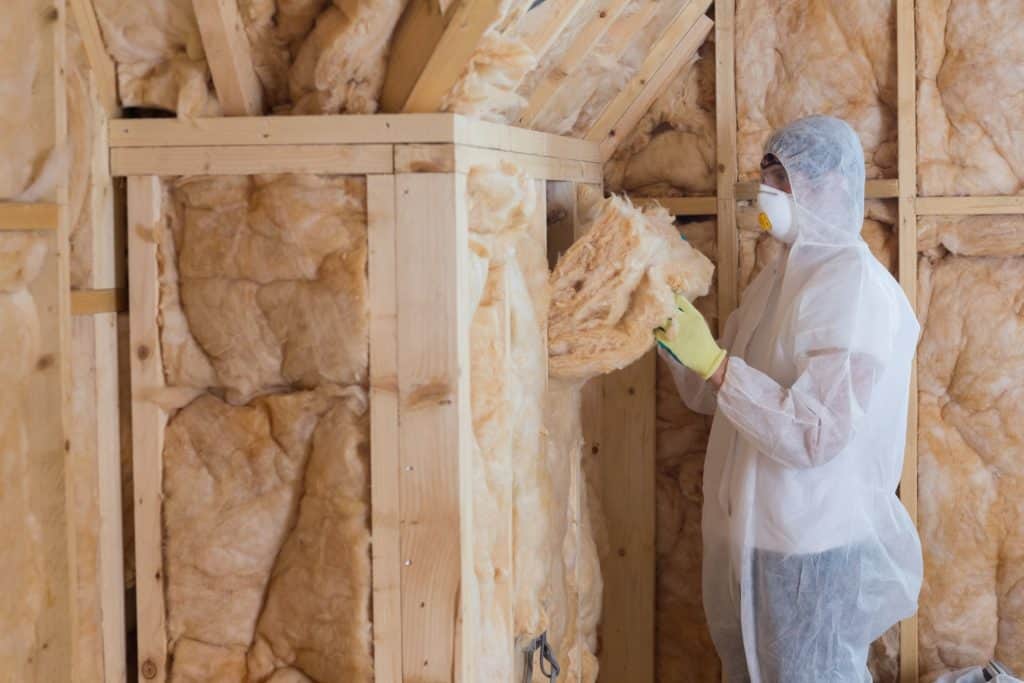
Uninsulated spaces lose nearly 60% of the heat through the roof and walls, as approximately 33% of outside air enters through the walls, while 25% or more of cold or warm air comes in through the roof. In addition, windows, doorframes, floors, and even power outlets can lower the space’s energy efficiency.
Any material capable of stopping the airflow into the home’s interior can be labeled an insulation material. Besides having the ability to prevent the outside air from coming in, these materials also stop the warm or cool air from going out.
Some residential insulation materials can serve as moisture barriers that filter out the humid air and keep spaces like attics or basements dry. All types of residential insulation make an apartment or a house more energy efficient by preventing the heat transfer between the interior and exterior.
Consequently, a well-insulated space stays warm or cold longer than uninsulated spaces that require high amounts of energy to heat up or cool down.
Types of residential insulation
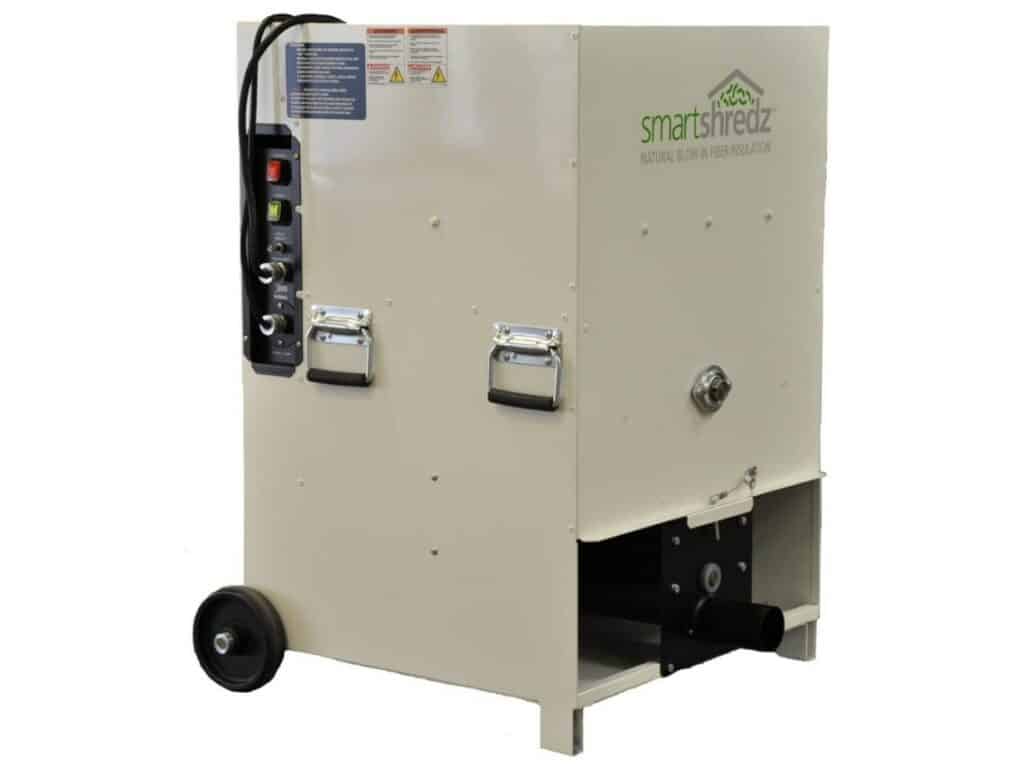
Building an energy-efficient home starts with choosing the insulation that will minimize the amount of outside air that can reach your home’s interior. You can reduce your utility bill by 20% if you choose the type of residential insulation suitable for the space you’d like to insulate.
Hence, you don’t necessarily have to use the same type of insulation for the roof, walls or crawlspaces, since combining two or more insulation types can help you combat airflow and moisture transfer in different areas of your home.
There are five types of home insulation, so let’s take a closer look at their properties.
- Blanket rolls and batts – Simple installation process makes blanket rolls and batts a great choice for DIY projects. Rolls and batts are manufactured in standard sizes that fit the spaces between floor joists, wall studs, or roof rafters.
- Blown-in insulation – Adjustability to different types of spaces makes the blown-in insulation an excellent fit for unapproachable crawl spaces or parts of the attic that are hard to reach. You need access to an insulation blower to use this type of insulation.
The highly portable SmartShredz fiber blowing machine, produced for service partners by intec, processes over 800 pounds of cellulose or 200 pounds of fiberglass per hour while weighing only 142 pounds with a recently enhanced aluminum airlock.
- Radiant barriers – Designed to reflect the heat away from the house’s interior, the radiant barriers are often utilized in warm climate areas. You can install this type of insulation on unfinished walls, attics, or floors.
- Spray foam insulation – You can either add another layer of insulation to a finished area with spray foam insulation or fill irregularly shaped spaces. In addition, you can choose between open and closed-cell construction depending on how dense you want the material to be.
- Rigid foam panels and foam boards – If you’re looking for a way to insulate unfinished basement walls, ceilings, or floors, the rigid foam panels or foam board might be the right option for you. This type of insulation is highly efficient at trapping the heat inside a home and preventing it from escaping.
Check out our full guide on how to choose the correct insulation between Faced vs Unfaced Insulation;
The most common insulation materials
Each insulation type can be made from several different materials, so the R-value or airflow and moisture stopping capabilities largely depend on the material.
There are more than ten insulation materials to choose from, but some of these materials can be hard to find. So we’re going to walk you through some of the most common options you can find easily.
- Fiberglass – Composed of fine glass fibers, this insulation material is utilized to produce blanket rolls and blown-in insulation types. It is also a highly efficient heat conductor that prevents heat conduction through solid objects.
- Mineral wool – The term refers to rock wool and slag wool insulation materials with similar insulation properties. Like fiberglass, the mineral wool material is used for blanket batts and blown-in insulation types.
- Cellulose – Made almost entirely of recycled paper, cellulose is often enriched with ammonium sulfate that protects the material from insects and fire. Although it is commonly damp sprayed into wall cavities, cellulose can also be applied dry, but only if the netting was installed previously.
- Polyurethane – Utilized to manufacture open and closed cell insulation foams, polyurethane is one of the densest insulation materials. It is also one of the most expensive insulation materials available both in rigid and fluid forms. Besides, polyurethane residential insulation can be made of polyisocyanurate and polystyrene.
- Natural fiber – Sheep wool, straw, or cotton are some of the most common natural fiber insulation materials. Each of these materials has different properties, so you have to check if they’re suitable for the space you’d like to insulate.
Differentiating between R and U values
The two terms you’re likely to encounter while insulating your home are the R and U values, which is why you should be able to differentiate between them. The U value measures the thermal resistance of all layers that constitute a particular building block.
Hence, the roof, walls, and doors have different U values, and calculating this value for each of these elements will help you choose the insulation with the matching R-value to meet residential insulation standards.
The U value of these elements depends on the material they’re made of and their insulating capabilities. On the other hand, the R-value is the measure of the insulation material’s heat resistance, and most manufacturers include this information for every product.
So, for instance, if you’re insulating an attic, you should opt for a material that has an R-value between R40 and R60, while the recommended R values for wall insulation materials vary from R13 to R21.
It’s worth pointing out that the state’s official thermal resistance requirements are usually significantly lower than most contractors suggest to their clients.
Read more:
Residential insulation installation process
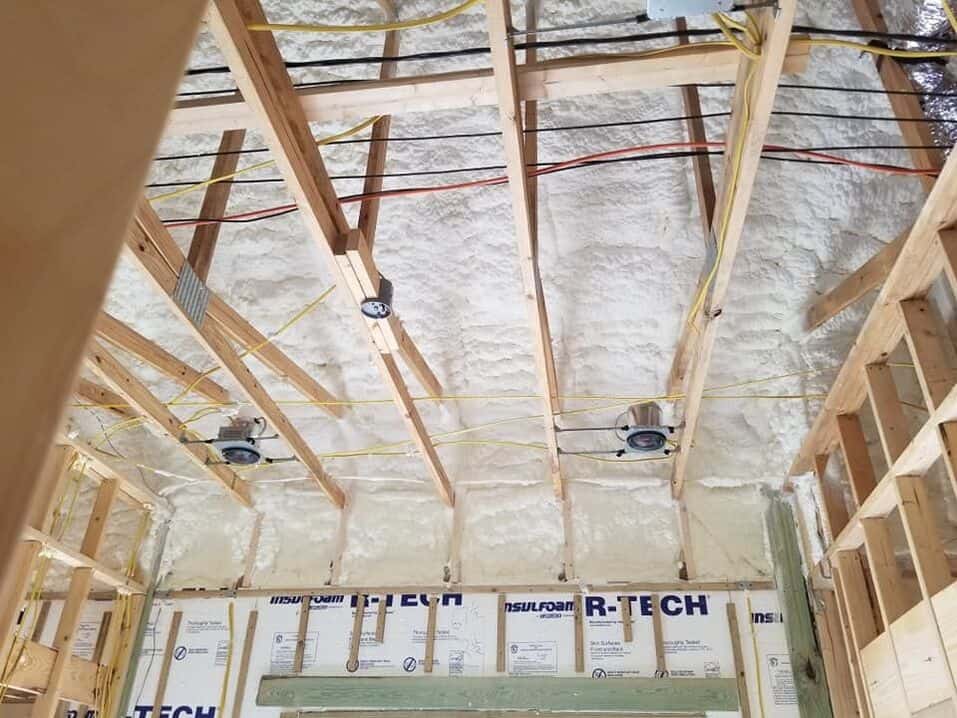
The type of insulation you choose will determine how much time and effort the installation process will take. Blanket rolls and batts are the easiest to install as you just have to unpack them and place them inside a cavity.
However, even with DIY-friendly insulation materials, you have to be extra careful since pushing the material forcefully into a space that is too small can lower its insulation capabilities. You have to wear protective goggles and a dust mask because tiny fiberglass particles can irritate your lungs and eyes.
Also, insulating walls or attics with spray foam involves much more than just spraying the foam, and you should consider hiring an insulation installer if you’re not familiar with the process.
Utilizing the blow-in insulation method is impossible without an insulation blowing machine that can cost up to $10.000.
The most important factors to consider while choosing residential insulation
Selecting the insulation type and material on your own isn’t advisable if you’re not familiar with the insulation capacities of each material and their suitability for different types of spaces.
Statistics show that 90% of homes in the United States don’t have sufficient insulation, making them energy inefficient. Consequently, the majority of homeowners spend more on heating and cooling than they have to.
All these data suggest that consulting a professional contractor to advise you during the insulation selection process can have far-reaching effects.
Even if you have the knowledge and expertise of a seasoned professional at your disposal, you should still consider the following factors while choosing residential insulation.
Impact on the home’s energy efficiency
Preventing the cold or hot air from streaming through the walls, doors, or windows will make it easier to maintain the same temperature. However, the outside temperature will always affect the temperature inside your home to a certain degree since insulation materials can’t stop the heat transfer entirely.
The insulation type, as well as the density and the R-value of the material you choose, will affect your home’s energy efficiency.
So, choosing an insulation type suitable for the room you want to install will enable you to spend less energy on heating and cooling a particular room or the entire house.
Airflow and moisture stopping capabilities
The air that enters your home through the crawlspaces, attics, or walls can be humid. As it passes through the building block, a certain amount of humidity stays in the material, which creates a fruitful ground for mold growth.
That’s why you should pay attention to the material’s moisture stopping capabilities, especially if you live in a humid climate with long winters.
For instance, cellulose might seem like great eco-friendly material, but it is a terrible fit for damp conditions because it cannot stop the moisture from reaching the home’s interior.
You might encounter a similar problem with fiberglass since the material can’t do much to stop the flow of humid air. The best way to deal with this issue is to install a vapor retarder and an air barrier.
Availability of the insulation type
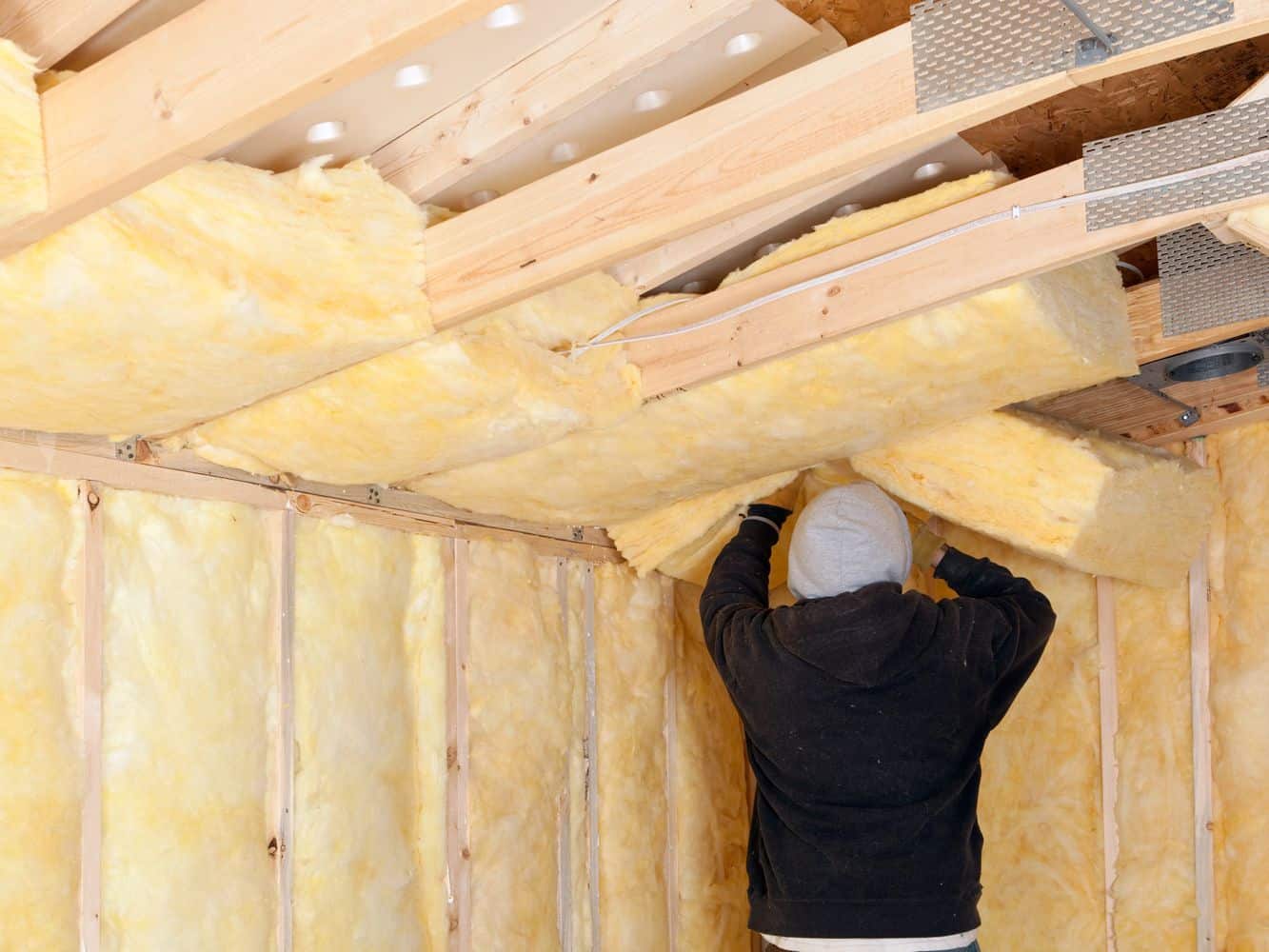
Cellulose extruded and expanded polystyrene, fiberglass, or spray polyurethane insulation materials are easy to find as almost all manufacturers produce several insulation types based on these materials.
However, finding options such as fiberboard panels that don’t contain petrochemicals might be challenging, as they’re not manufactured in the United States.
The shipping costs for an insulation material like fiberboard will increase their price significantly, which makes them only a good option if you’re looking for an eco-friendly insulation solution.
The complexity of the installation process
Some insulation types can be installed in few hours, while others may take days to put up. The size of the area you’re insulating also plays a part in how long the installation will last since it takes around 3 hours to cover a 1000ft/2 attic.
The installation requirements of different insulation types vary, so installing blanket rolls takes significantly less effort than using an insulation blower to fill the wall cavities.
In addition, the type of insulation you choose will determine if you complete the installation process on your own or if you’d have to hire a contractor.
Cost and stability
If installed properly, residential insulation can last for 20 to 30 years, and the first signs of deterioration shouldn’t appear for at least 15 years after installation. Even so, prolonged exposure to harsh weather conditions can affect the stability of the insulation and cause it to deteriorate faster.
The cost of insulation varies from type to type, so you can end up paying between $0.30 and $1.50 for a square foot of blanket rolls, while spraying insulation can cost you up to $2 per square foot.
While calculating expenses, you should also factor in the installation costs, as you’ll have to spend a few hundred dollars to have the insulation installed by a professional.
The advantages of residential insulation
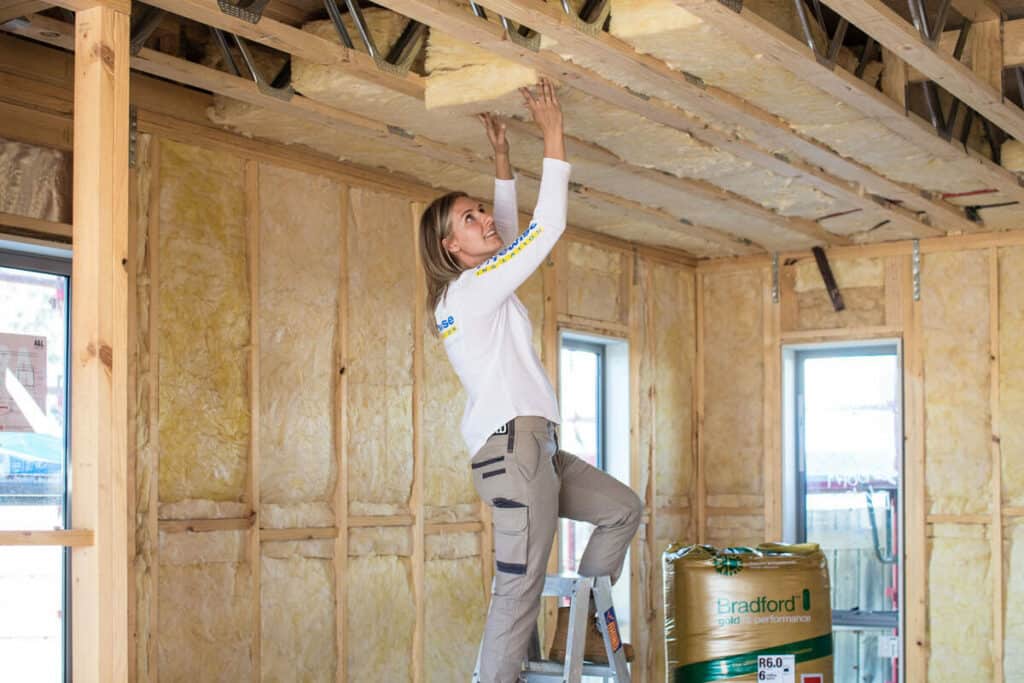
Lower energy consumption
Insulating your home will enable you to use the heating system or AC less frequently because it will be easier to maintain the same room temperature for hours. As a result, your monthly utility bills are going to be lower by several percent.
Highly durable
Residential insulation remains in good condition for two to three decades, as its ability to prevent heat loss doesn’t diminish over time. What’s more, most insulation materials contain chemicals that repel insects and slow down the deterioration process.
Some types of residential insulation serve as moisture barriers
Besides blocking the airflow, some insulation types can prevent water condensation and rot and mold that can damage a building element. This saves you the cost and the trouble of adding a vapor retarder to your home’s insulation.
Suitable for DIY projects
Even though the installation process of some residential insulation types can be overwhelming for DIY enthusiasts, installing blanket rolls is a straightforward process that doesn’t take a lot of time or effort. So, you can use this insulation type if you want to insulate a room by yourself.
Affordable
You can get the most expensive insulation material to insulate an entire 2000sq/ft house for less than $5000, while insulation types like rigid foam panels or blanket rolls are even more affordable. Given the long lifespan of insulation materials, their cost is highly affordable.
The disadvantages of residential insulation
Most insulation materials contain toxic chemicals
Isocyanate or formaldehyde are just a few among the numerous toxic chemicals you can find in insulation materials that can cause breathing problems, skin irritation, and a broad spectrum of health problems.
Replacing residential insulation can be difficult.
Despite having a long lifespan, insulation materials aren’t indestructible, as severe weather conditions and various other factors can cause them to decay faster than expected. Replacing insulation is an arduous task that may require you to leave your home until new insulation is installed.
Top 4 residential insulation recommendations
Spray foam, mineral wool panel, or fiberglass blanket rolls are some of the most common types of insulation you’ll find on the market.
On the other hand, options like cork, cementitious foam, or fiberboard panels aren’t readily available at the nearest home improvement store. So, while searching for an insulation type you’d like to get, you also have to consider its availability.
We’ve shortlisted several residential insulation options that are easy to find, so let’s take a quick look at their properties.
Johns Manville Corebond III

With the R-value at R7 per inch, the Johns Manville Corebond III is a great fit for floors, walls, and various other spaces. This closed-cell polyurethane spray foam should be applied in a single pass at the maximum thickness of 3.5-inches.
The Corebond III serves as an air barrier at thicknesses higher than one inch, and it also helps regulate moisture. The closed-cell foam is resistant to fungi and mold, ensuring its durability, and it doesn’t shrink or settle after application.
You can apply the Corebond III at temperatures that range from 20F to 120F, so you don’t have to depend on outdoor conditions to complete the insulation process.
Optima Premium Blowing Wool
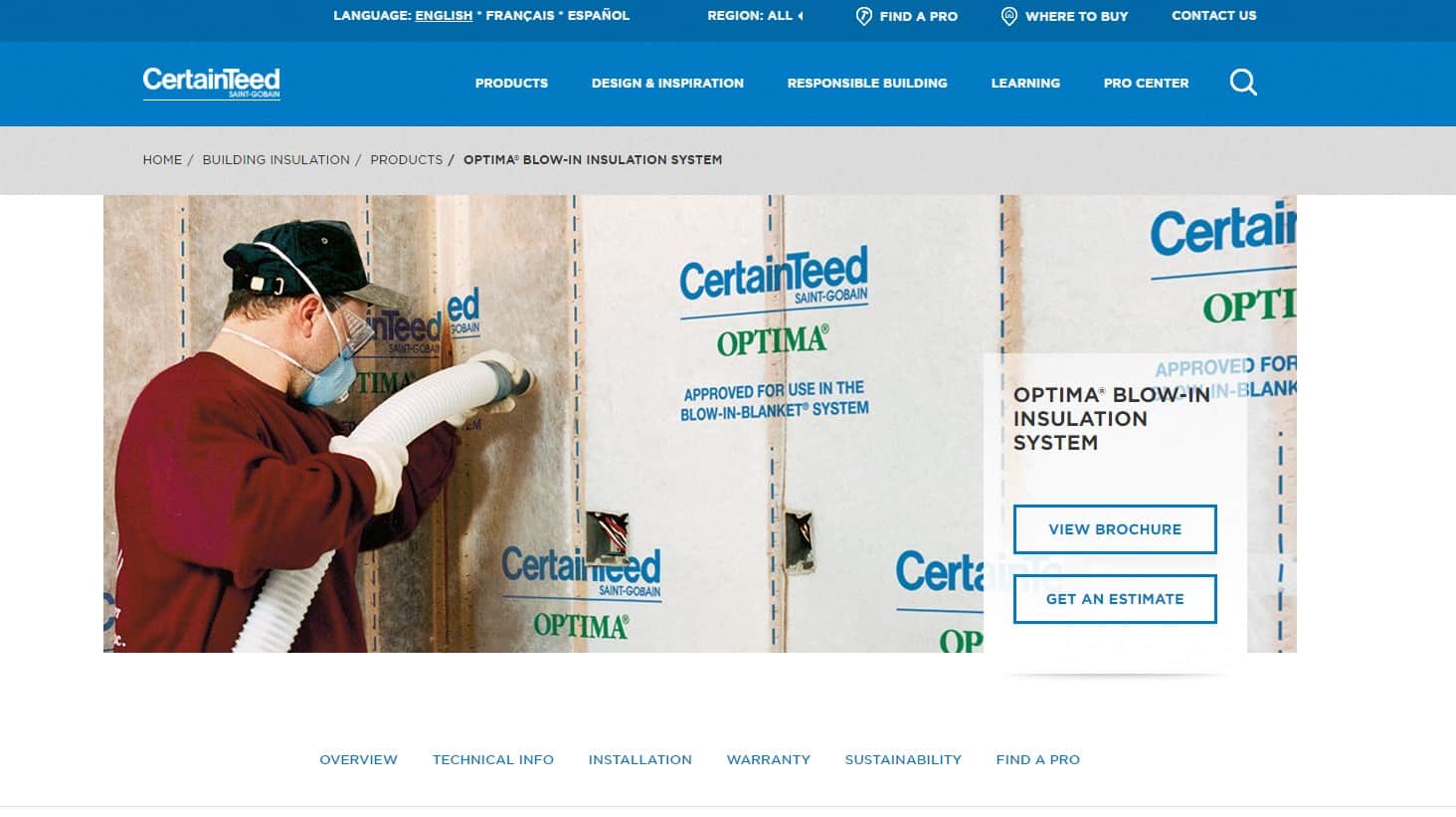
GREENGUARD GOLD certified and formaldehyde-free, the Optima Premium Blowing Wool is both thermally efficient and environmentally friendly. The product is aimed at homeowners in need of insulation material with a high R-value, which doesn’t need a lot of time to dry.
Besides providing excellent thermal efficiency, the Optima Premium Blowing Wool also has excellent sound insulation properties. This Optima model is designed for applications in closed cavities, and it doesn’t settle over time.
The installation process is a bit demanding since wool is blown behind an Optima fabric, making it difficult to adjust the density and thickness.
Rockwool Mineral Wool panel
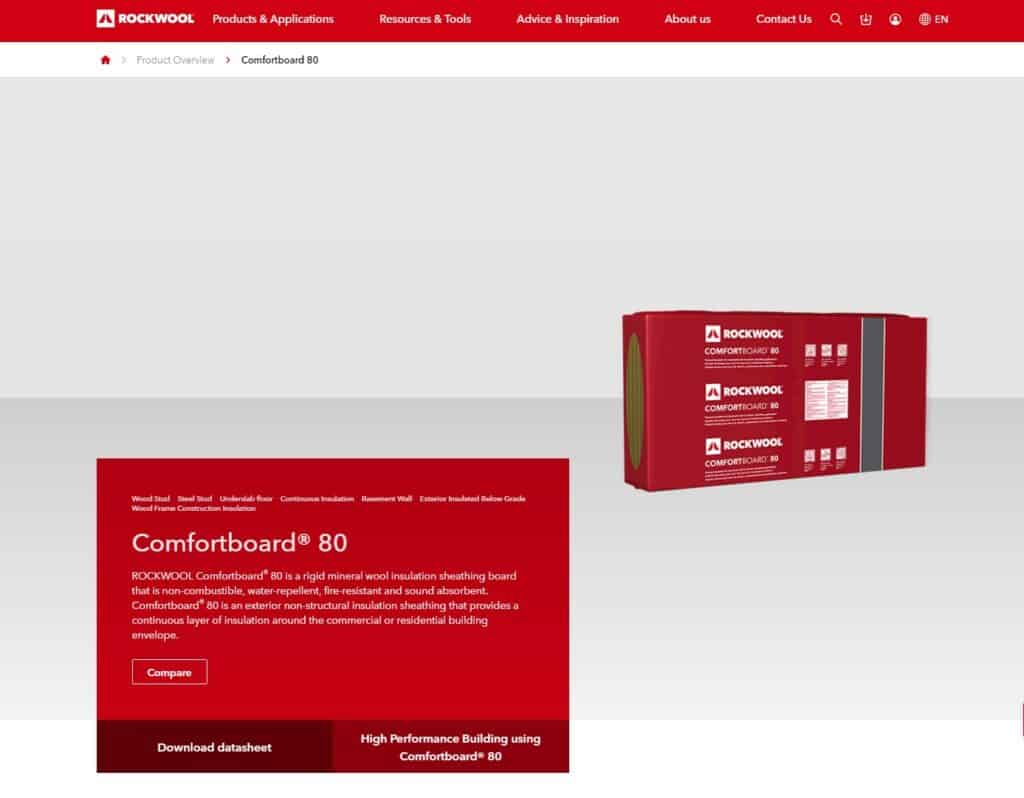
Perfect for high-temperature insulation tasks, the Rockwool Mineral Wool panel features a foil backing.
The panel is water-resistant, rigid, and capable of providing high amounts of compressive resistance, making it a great fit for spaces in which you want to maintain a constant temperature and keep the humidity level at the minimum.
This insulation material is also chemically stable, non-corrosive, and capable of delivering excellent thermal resistance. Most importantly, the installation process is simple as you just have to make sure that the panel can fit the cavity and then apply pressure to make sure it is positioned correctly.
Froth-Pak Spray Foam Insulation Kit
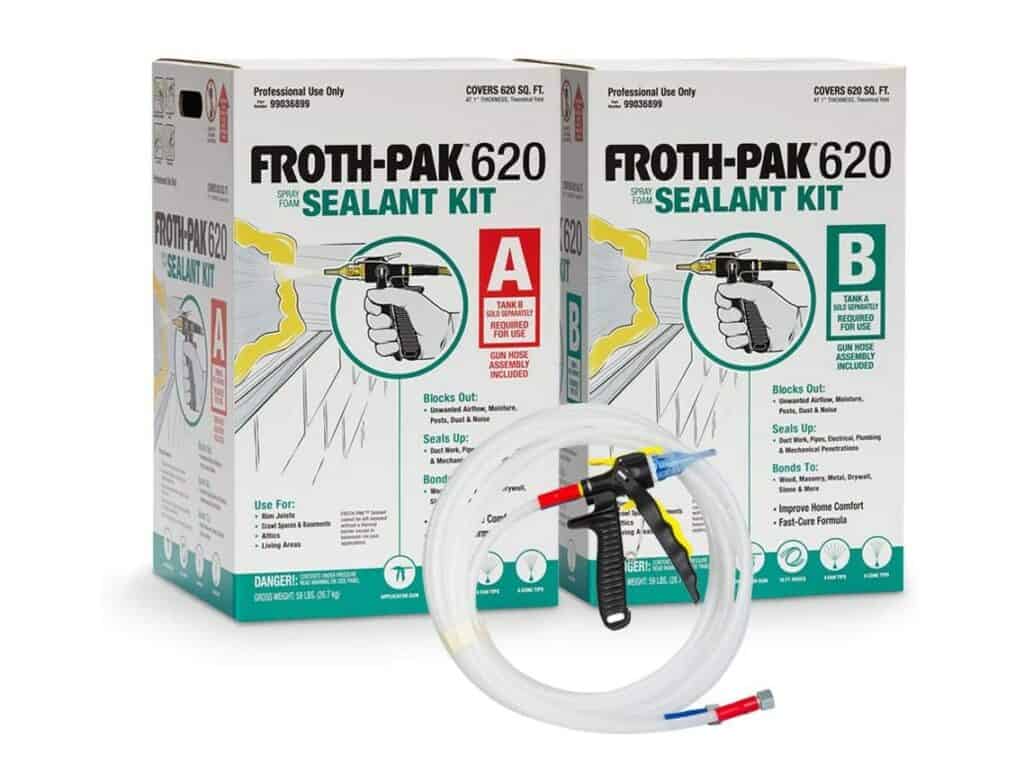
DIYers who want to try their luck with spray foam insulation should get the Froth-Pak Spray Foam Insulation Kit because it will grant them access to both the insulation materials and the HVAC tools.
The kit contains a gun dispenser, a hose, a wrench, fan nozzles, and a 2-part polyurethane foam. The dispensing system is designed to ensure a smooth flow of the foam and provide its users with a high degree of accuracy.
That’s why you can use this kit to fill wall cavities that are hard to approach, and it contains enough foam to cover 620sq/ft of space.
Frequently asked questions about residential insulation.
Question: Do I have to install a vapor barrier with the residential insulation?
Answer: In case you’re using the spray foam insulation, installing a vapor barrier isn’t necessary, but if you opted for mineral wool or fiberglass, then a vapor barrier can help you get rid of the moisture.
Question: What is the most durable insulation material?
Answer: The closed-cell polyurethane foam is the most durable insulation material as it can remain intact for decades without being affected by mold or fungi.
Question: Should I insulate exterior walls?
Answer: Yes, you should. Insulating exterior walls will add an extra layer of protection against cold or warm air and humid weather conditions.
Question: Is residential insulation installation necessary?
Answer: Each state has its insulation standards, and the residential object you’re building has to meet these standards to be deemed safe to use by the building inspectors.
Final thought: How to know which type of residential insulation is the best?
The process of building a house takes place in stages, and insulating walls, doors, or attics is one of the most important stages of that process.
Good insulation makes a house comfortable to live in, while at the same time, it reduces the amount of power you have to use to keep the AC or heating system running.
The insulation types and materials have different airflow stopping capabilities, which is why you should check the material’s properties before you choose to buy it.
We recommend opting for closed-cell polyurethane spray foam like the Johns Manville Corebond III because it is durable and serves as an air and humidity barrier. You should get an insulation material such as the Optima Premium Blowing Wool if a high R-value is important to you.
We hope that our article has helped you understand the basic concepts of residential insulation. Leave a comment and share your opinions with us.
- R13 vs R15 Insulation Compared: What’s the Difference? - December 9, 2023
- Ruud vs Trane HVAC Systems Compared - December 9, 2023
- Senville Mini Split Review and Guide: Is It Worth Buying? - December 9, 2023


